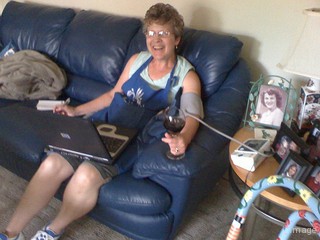It is important to keep tabs on many aspects of your health, especially as you age. Along with the suggested annual checkup and other recommended procedures by your doctor, it is important to monitor readings like your blood pressure. There are some tests and checks that can be done best by a doctor, but there are some, like the blood pressure, that can be monitored on your own and then reported to the doctor.
The doctor may even recommend that you monitor your blood pressure readings at a local store machine or with your own blood pressure cuff at home. If you go to the store and find the blood pressure cuffs (brands like Omron, Advocate, CVS, Homedics, Ozeri, Adscope, LifeSource, Santamedical, Panasonic, etc), you will see that there are many options. There are automatic BP cuffs, manual cuffs, HBP wrist cuffs and more. Ask the doctor which model may be the most reliable.
Once you have your home blood pressure cuff you will want to find out how to check blood pressure readings. If you are have a difficult time getting your BP machine to work properly, or you are not sure if you are getting the correct readings in mmHg, you can take it into the doctor, or maybe the pharmacy and they can show you how to check blood pressure readings on your BP device. You will want to keep a record of your readings on paper if the machine does not do that automatically.
Blood pressure readings can tell so much about a person’s health. It is important to keep up with your numbers and know what they mean. There are BP charts online and with your doctor that will show the different ranges of blood pressure. Most charts show that less than 120 mmHg on the top number (systolic) and less than 80 mmHg on the lower number (diastolic) are normal.
If either of these numbers is consistently high, then you will need to see your physician so they can help make a proper diagnosis. Sometimes high blood pressure, or hypertension, is caused by a stressor and can be resolved once that stress is resolved. Other times, however, the hypertension is a sign or symptom of other health issues and needs to be treated. With a medical history and a visit to the doctor, there can usually be a good assessment of the situation.
With high blood pressure certain symptoms can appear, many of which people can assume are related to other issues like stress and not their blood pressure. This is why learning how to check blood pressure is so vital. If you have symptoms like severe headache, vision problems, blood in the urine, fatigue, confusion, chest pain, irregular heartbeat, eye problems (blurred or double vision), nosebleeds, drowsiness, nausea, pounding in the ears, neck or chest, respiratory distress, or difficulty breathing it is recommended that you see a physician.
Many people walk around not even knowing they have high blood pressure disease. It is the same for low blood pressure. People suffer with symptoms of low blood pressure (hypotension) like dizziness, lightheadedness, fainting, unsteadiness, blurred vision, palpitations, general weakness, and fatigue and don’t relate it to their blood pressure. It is so important to have an annual checkup so you and your doctor can monitor your health concerns like your blood pressure.
